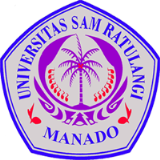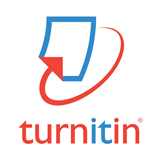Penggunaan tepung daun Kedondong Laut (Polyscias treticosa) sebagai substitusi tepung dedak padi bagi performa pertumbuhan (Oreochromis niloticus)
Abstract
This research was conducted at the Laboratory of Kelurahan Malalayang Satu, Malalayang Subdistrict for one month. The aim of the study was to determine the best formulation for substitution of marine kedondong leaf flour for rice bran flour with different compositions for the relative growth performance of tilapia. Determining the best formulation for substitution of marine kedondong leaf flour for rice bran flour with different compositions for the value of tilapia feed efficiency. The maintenance containers used are plastic containers measuring 50 high and 30 cm in diameter, totaling 15 pieces. Each container is filled with 10 liters of water. The test animals used were tilapia fry with a weight of 18.63-20.76/10 fish/gram, and 10 fish stocked with container tilapia. The test materials used were sea kedondong leaf flour, rice bran, shrimp waste flour, corn flour, tapioca flour, soybean flour, commercial fish meal, top mix and fish oil with different compositions. Each treatment was treatment A, 0% rice bran flour feed, 20% sea kedondong leaf meal, B treatment, 5% rice bran flour feed, 15% sea kedondong leaf flour, treatment C, 10% rice bran flour feed, 10% Sea kedondong leaf flour, treatment D, 15% rice bran flour feed, 5% marine kedondong leaf meal Treatment E, 20% rice bran flour feed, 0% sea kedondong leaf meal. The frequency of feeding was 3 times a day, namely at 08.00, 12.00, and 16.00 WITA, with a feeding dose of 10%. Water changes are carried out every 3 days. Growth observations were carried out once a week using a 0.01g digital scale. The experimental design used was a completely randomized design with 5 treatments and 3 repetitions. The variables analyzed were the relative growth and feed efficiency values. The results showed that the highest relative growth was in treatment E (47.76) and the highest feed efficiency value was in treatment E (35.86), followed by treatment C (29.87), treatment D (25.48), treatment B (23.97), and treatment A ( 18.82).
Keywords
Full Text:
PDFDOI: https://doi.org/10.35800/bdp.10.2.2022.40802
Refbacks
- There are currently no refbacks.

This work is licensed under a Creative Commons Attribution-NonCommercial 4.0 International License.






